Quick Start Guide for VST3 Real-time
- Quick Start for VST3-compatible DAWs
- Overview
- Installation and Initial Setup
- Adding Vocalign 6 Pro to your Dub track
- The plugin window and Sidechain settings
- Removing Vocalign
- Selecting a Preset
- Processing your Guide and Dub
- Further controls
- Processing a Harmony Track
- Fixing Problems
- Previous
Quick Start for VST3-compatible DAWs
Studio One, Cubase, Nuendo, Ableton Live, Reaper, Cakewalk
Overview
In this Quick Start Guide, you will learn how to set up your VST3-compatible DAW and the VocAlign 6 Pro plug-in to be able to load audio into VocAlign 6 Pro, process it, and return the processed output to your DAW.
What about my DAW?
We will show how this VocAlign 6 Pro works using Studio One as an example.
However, very similar procedures apply to Cubase, Nuendo, Live and many other DAWs using VST3.
 | IMPORTANT: Whenever there is a difference in operations from Studio One and the other DAWs listed, we will provide links to EACH DAW's specific instructions for you to follow, after which, you will be returned to this main section to continue to follow the instructions in Studio one, but common to all DAWs mentioned. |
If you are new to our products, the audio transfer procedures might seem more complex at first than other plug-ins.
This is because you have to tell VocAlign 6 Pro which track is the Guide and which track(s) are the ones that need their timing and/or pitch adjusted by VocAlign 6 Pro to match the Guide's.
We won’t go into details in this Quick Start about the control panels or displays, as those will be described in detail in the sections in the folder Using VocAlign 6 Pro .
One last note - because we started long ago in the film industry, we call audio to be modified and output the “Dub”.
Installation and Initial Setup
- You should have already downloaded, installed and authorised the VocAlign 6 Pro plug-in on your Mac computer.
See Installation and Authorization if you haven't done this.
Adding Vocalign 6 Pro to your Dub track
In Studio One, we will add VocAlign 6 Pro as an Insert on the Dub audio track that we would like to work with. For this guide, we have two tracks to work with:
- Lead Vocal GUIDE: our main vocal track, referred to as our Guide
- Double Vocal DUB: our vocal double, or Dub, that we would like to tune and align to our Guide track

With our Dub track selected, we can add VocAlign as an Insert by clicking one of the small + symbols indicated in the below image by a red arrow. The Inserts are available in the Mix window or the Inspector panel on the left side of the Studio One interface. If your Inspector is hidden, click the i button indicated in the top left of the below image to open it.
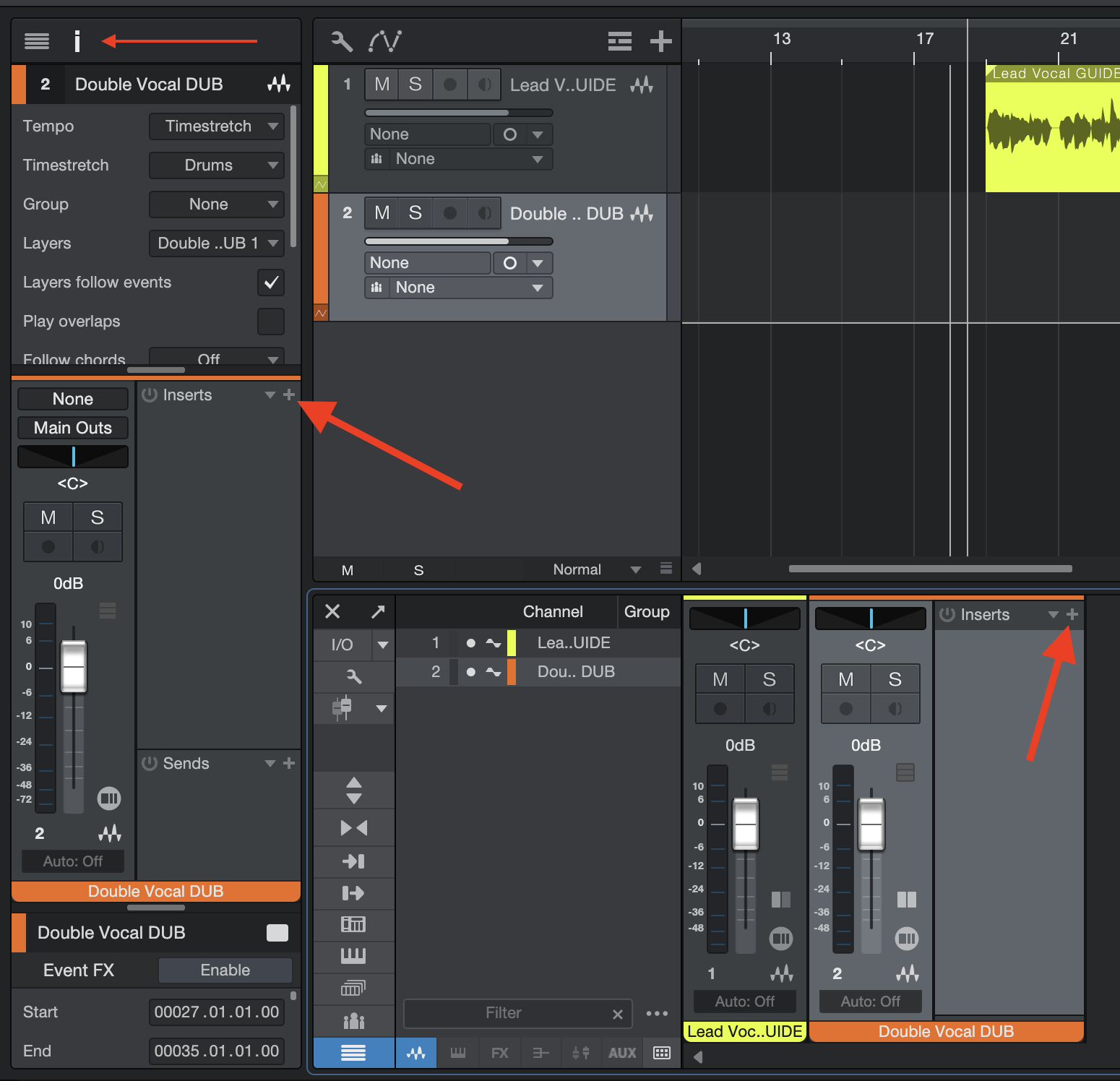
Select VocAlign 6 Pro VST from the Synchro Arts folder in the Inserts menu, as shown below.
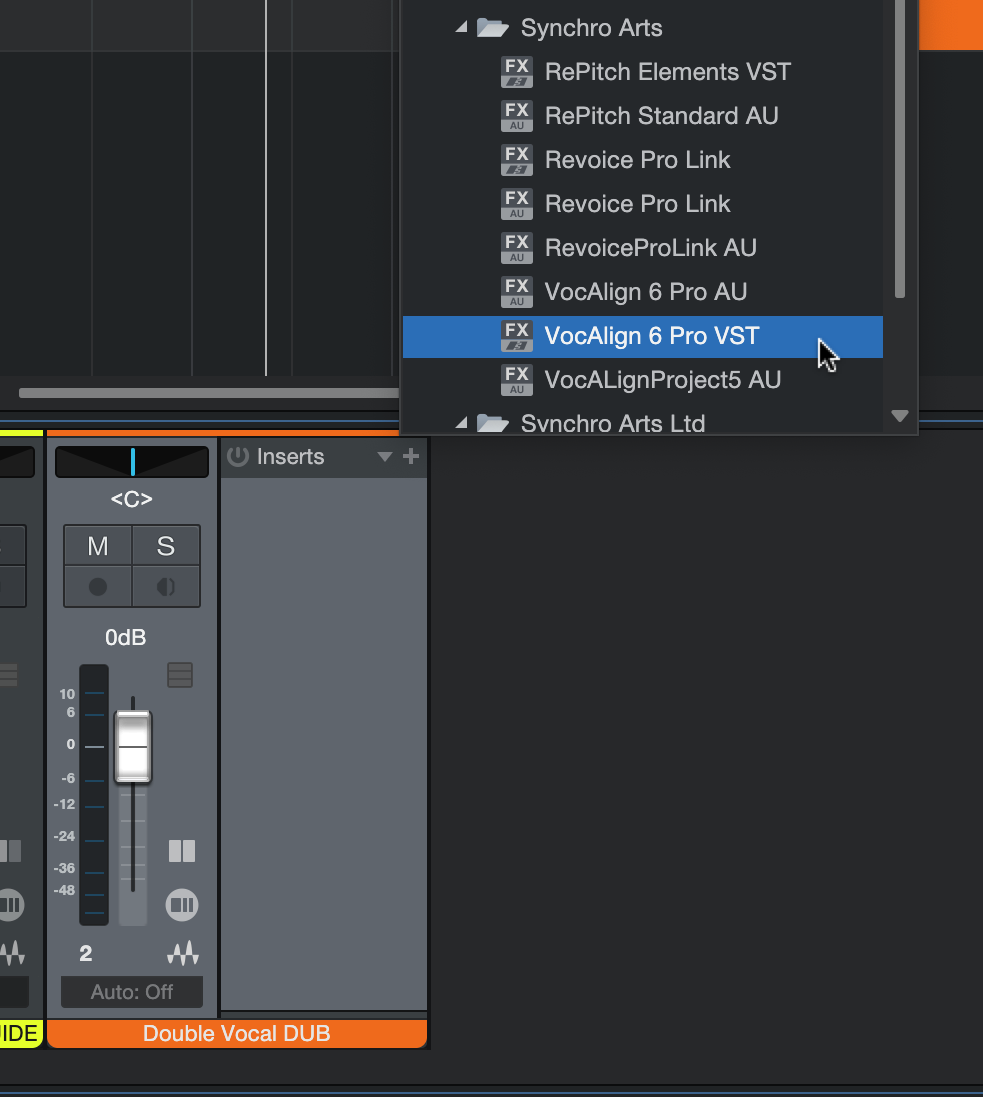
The plugin window and Sidechain settings
Now that we have added VocAlign to our Dub track, you should see the VocAlign plugin window below.
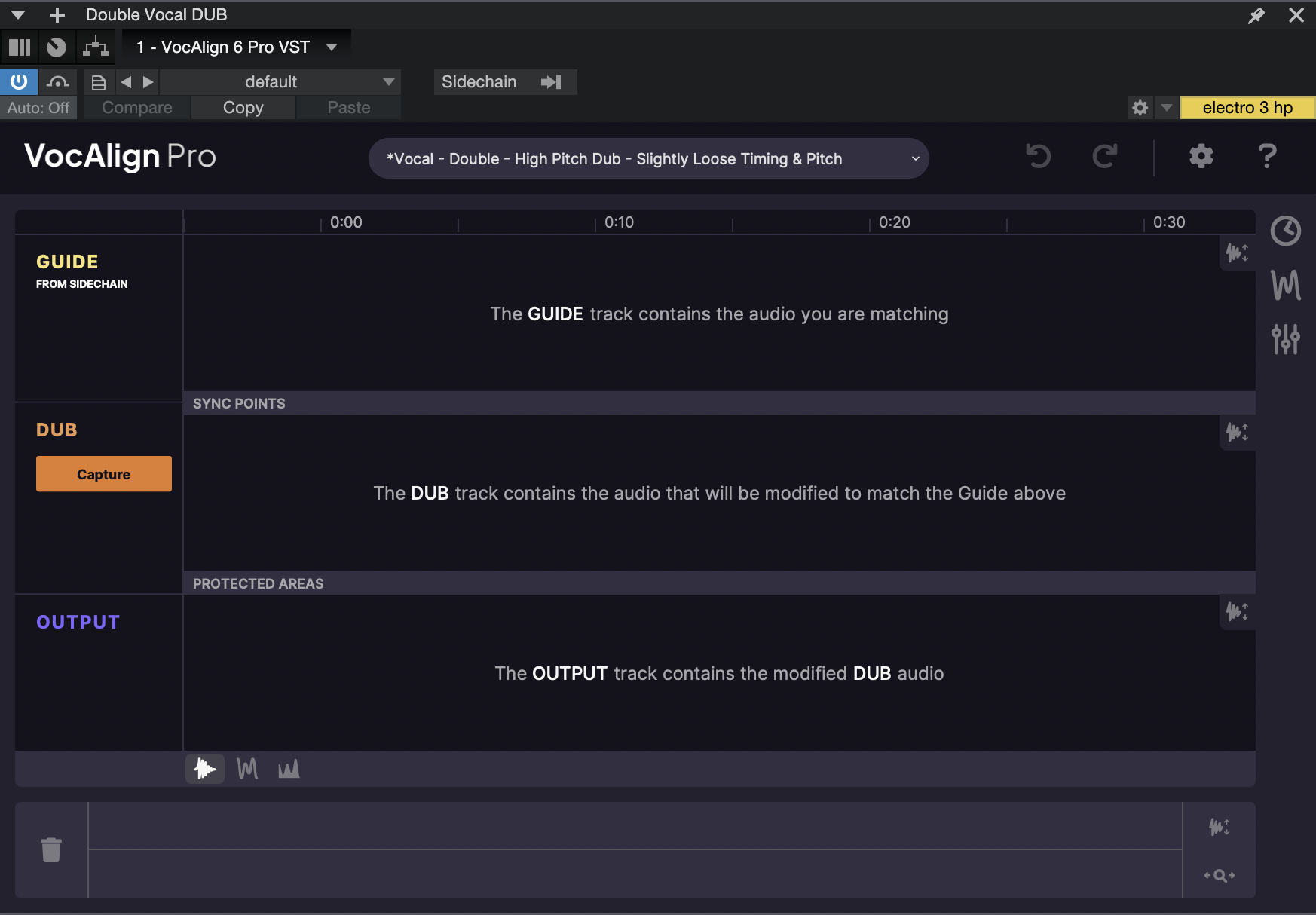
We can now tell VocAlign what track will be our Guide by selecting it as a Sidechain input. Click the arrow beside the word Sidechain in the top bar of the Plugin window, circled in red below.
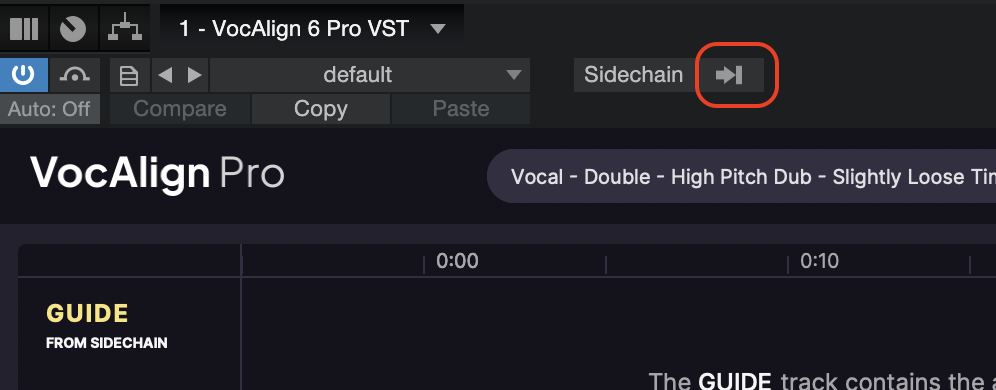
Select your Guide track from the menu. You have two options: Send and Output. Selecting Send will create a new send on your Guide track, while Output will listen to the Guide track's final output. If you have any other inserts on your Guide track such as delay or reverb, you must bypass them during the Capture process.
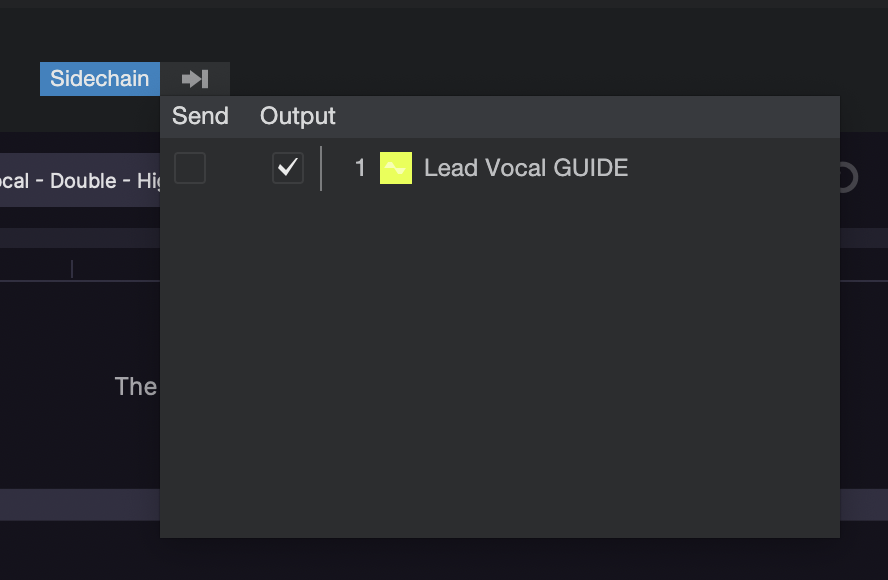
For other DAWs, research how to setup a sidechain input for your plugin, and set your Guide track as the sidechain. It should be very similar to the above workflow.
Removing Vocalign
If you need to remove VocAlign, click the small downward triangle beside the VocAlign 6 Pro insert on your Dub track, and select Remove from the menu as shown below..
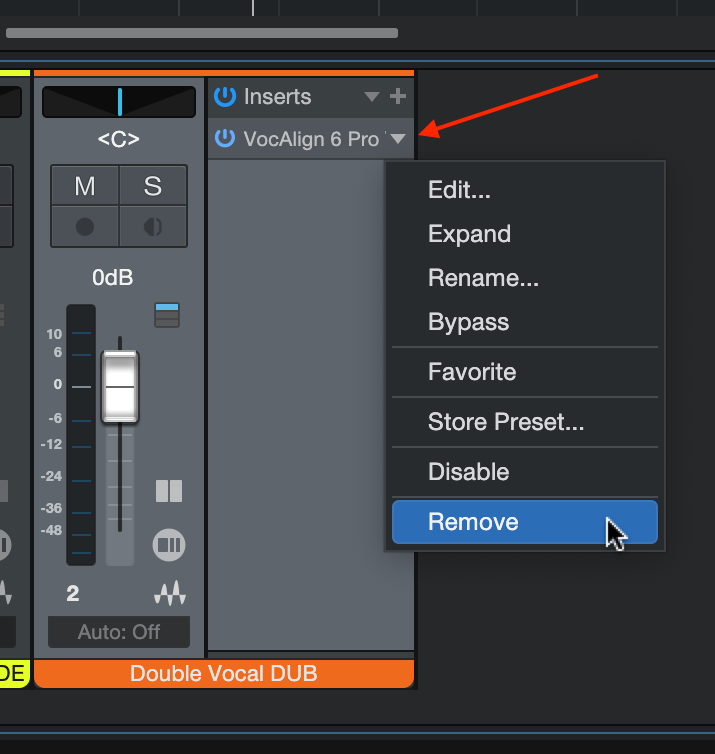
Selecting a Preset
Before capturing our audio, we will select a preset. Once the Dub and Guide are captured, VocAlign will immediately process and output it with whatever preset is currently selected. The preset menu is at the centre-top of the VocAlign interface, shown below.

Click the preset to open a dropdown menu. Our Dub track is a vocal in a high range, so we will select 'Vocal -> Double -> High Pitch Dub -> Slightly Loose Timing & Pitch' as indicated below.
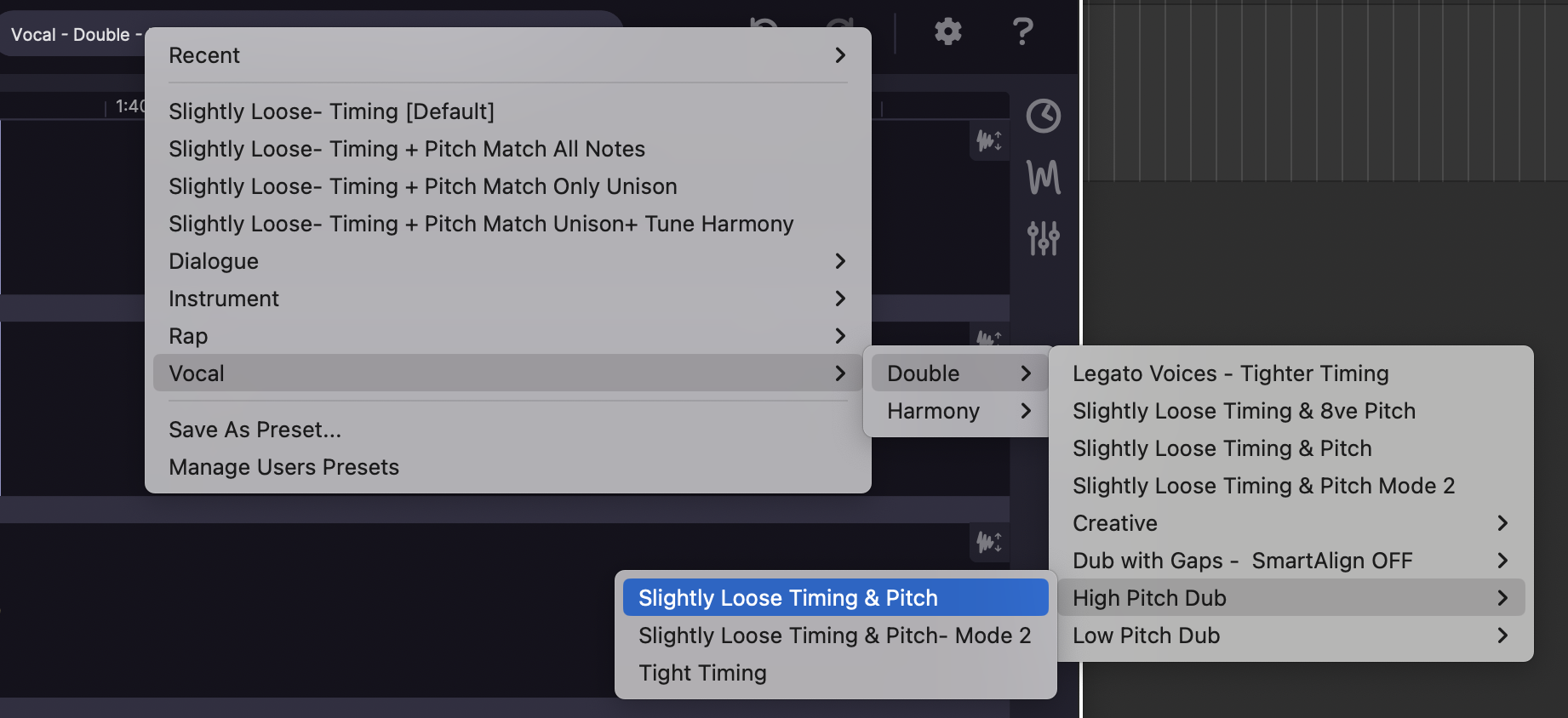
Processing your Guide and Dub
We will now Capture our Guide and Dub into VocAlign.
First, set your loop to cover the section of audio we would like to work with.
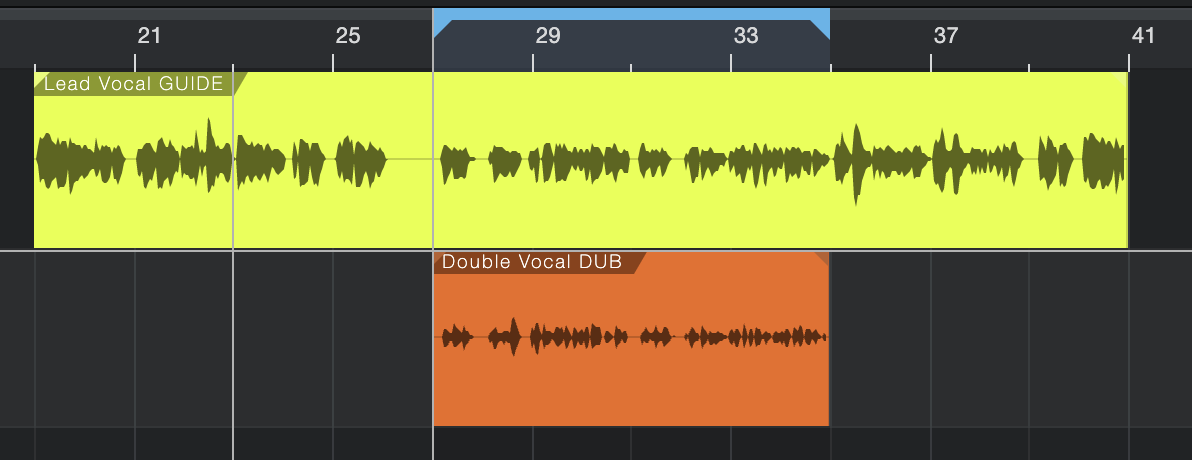
In VocAlign, we can now click the orange Capture button underneath Dub as indicated below. This will arm VocAlign.
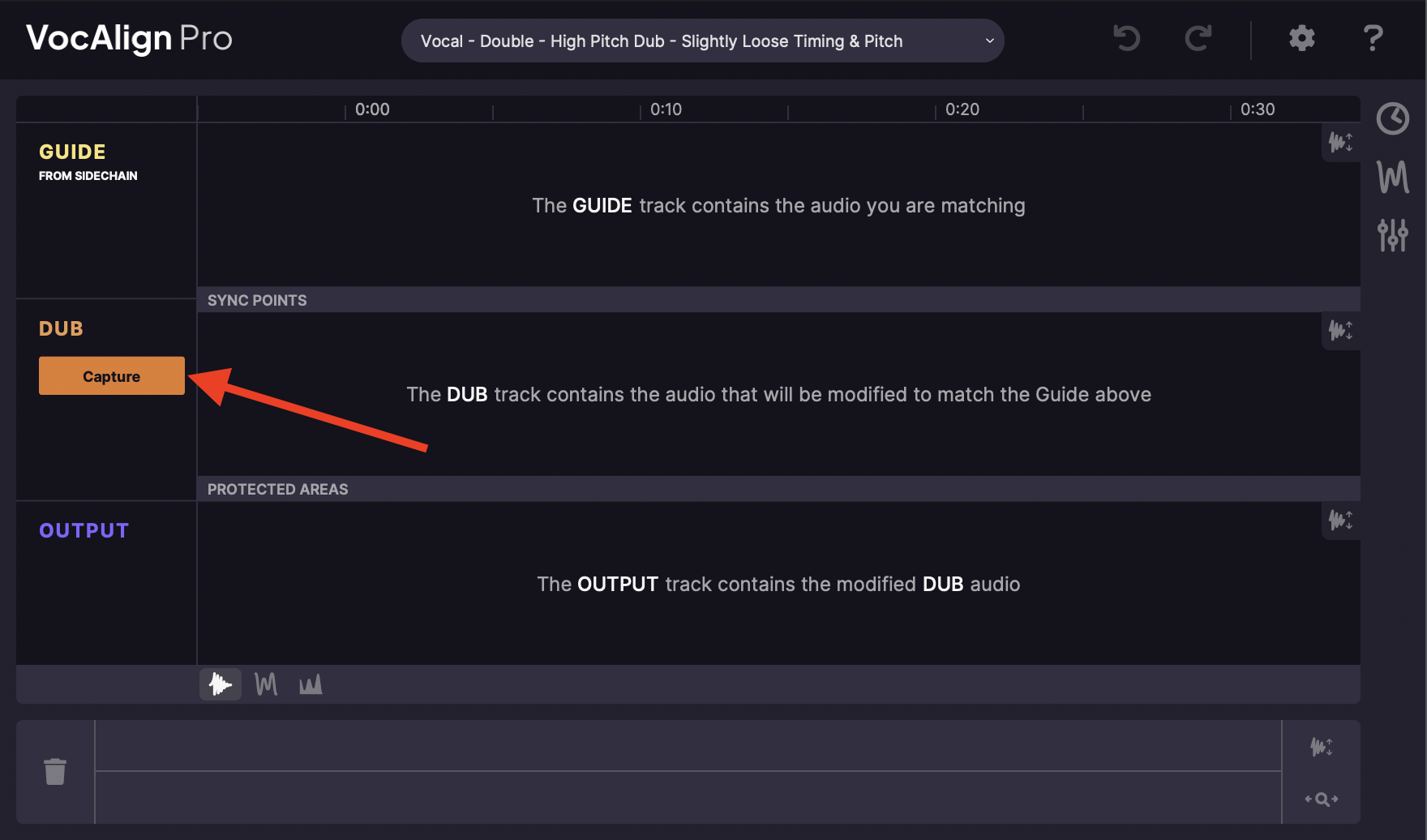
In the below image, we have clicked the Capture button. It has turned red and now shows 'Stop', and two red 'Record' lights are present beside Guide and Dub. This indicates VocAlign is ready to receive or capture our audio.
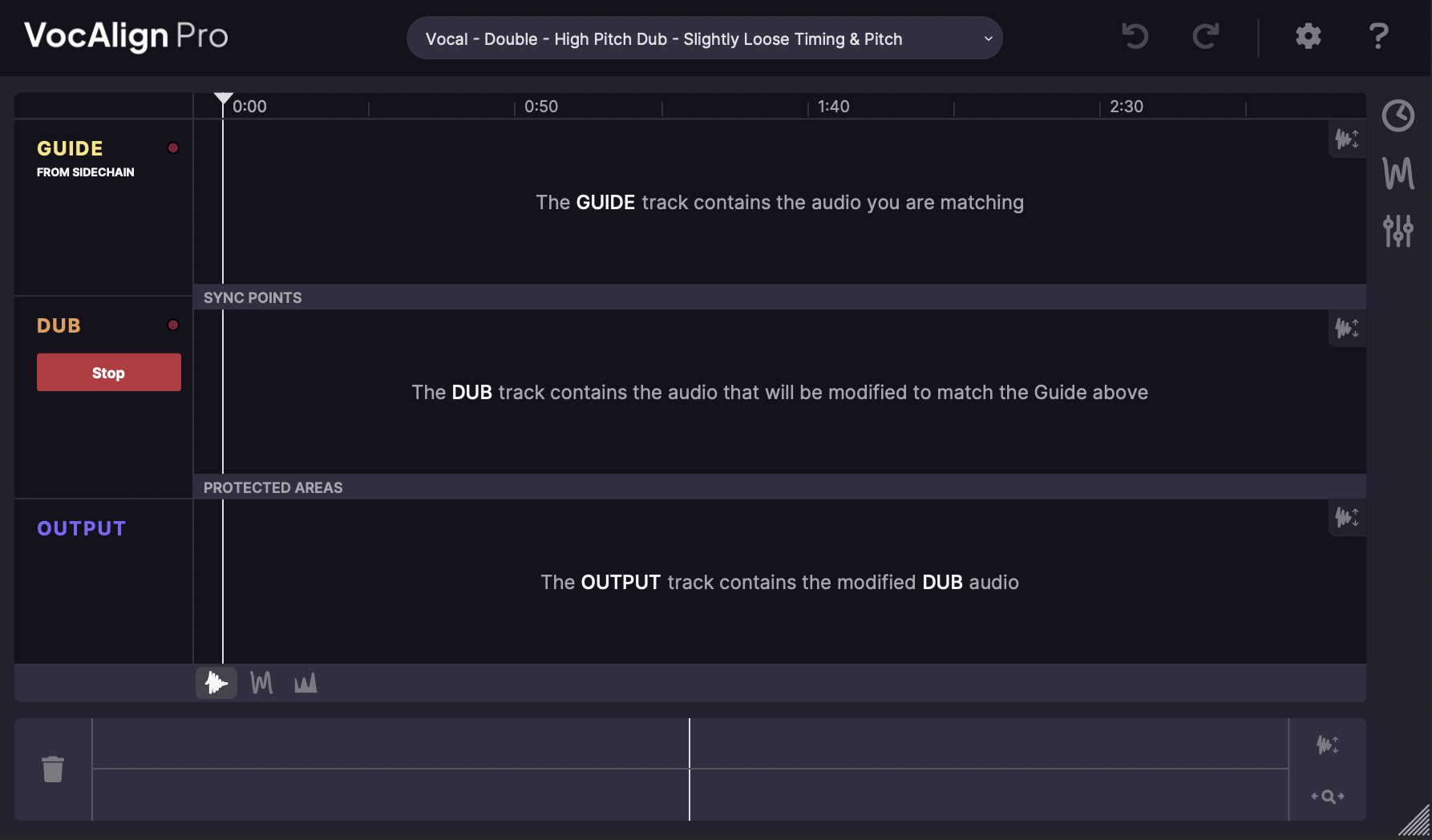
To begin capturing audio, click Play or hit spacebar in Logic. While playback occurs, you will hear your audio, and we can see the playhead advancing within VocAlign, while grey waveforms are drawn in behind it, indicating our audio is being captured.
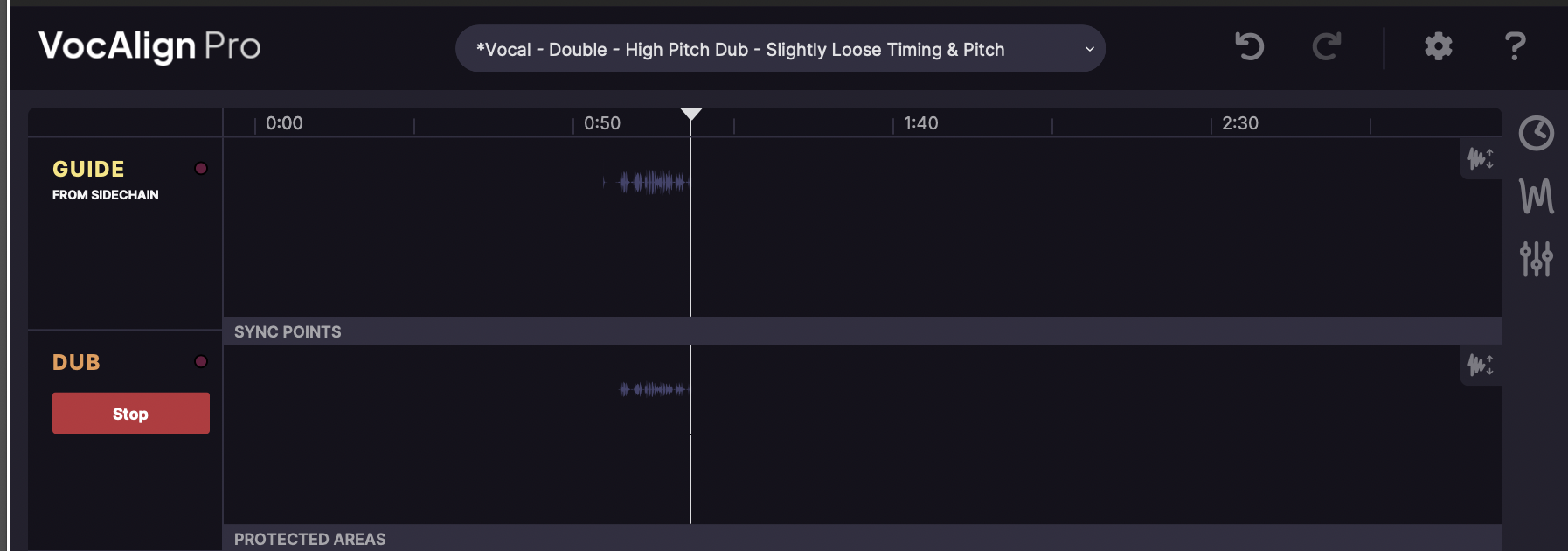
The capture happens in real time. Once it is complete, VocAlign immediately processes the Dub with our selected preset, and creates a new purple waveform in the Output section.
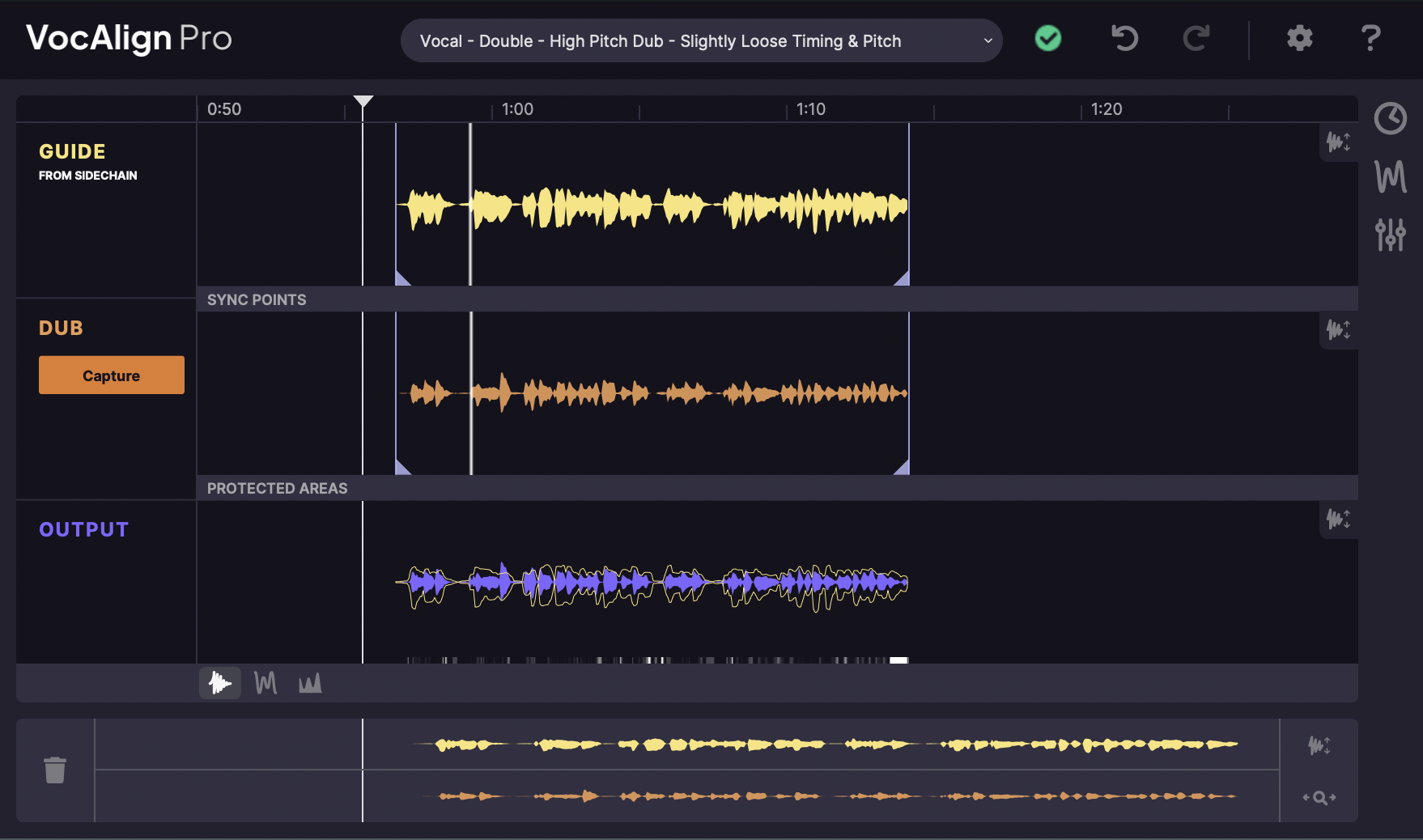
Rendering your output
If you would like to render and commit your changes, right click your Dub track and select 'Event -> Bounce Selection'. You can undo this using the standard Undo/Redo controls for your DAW.
If you are using another DAW, please research how to render or bounce audio.
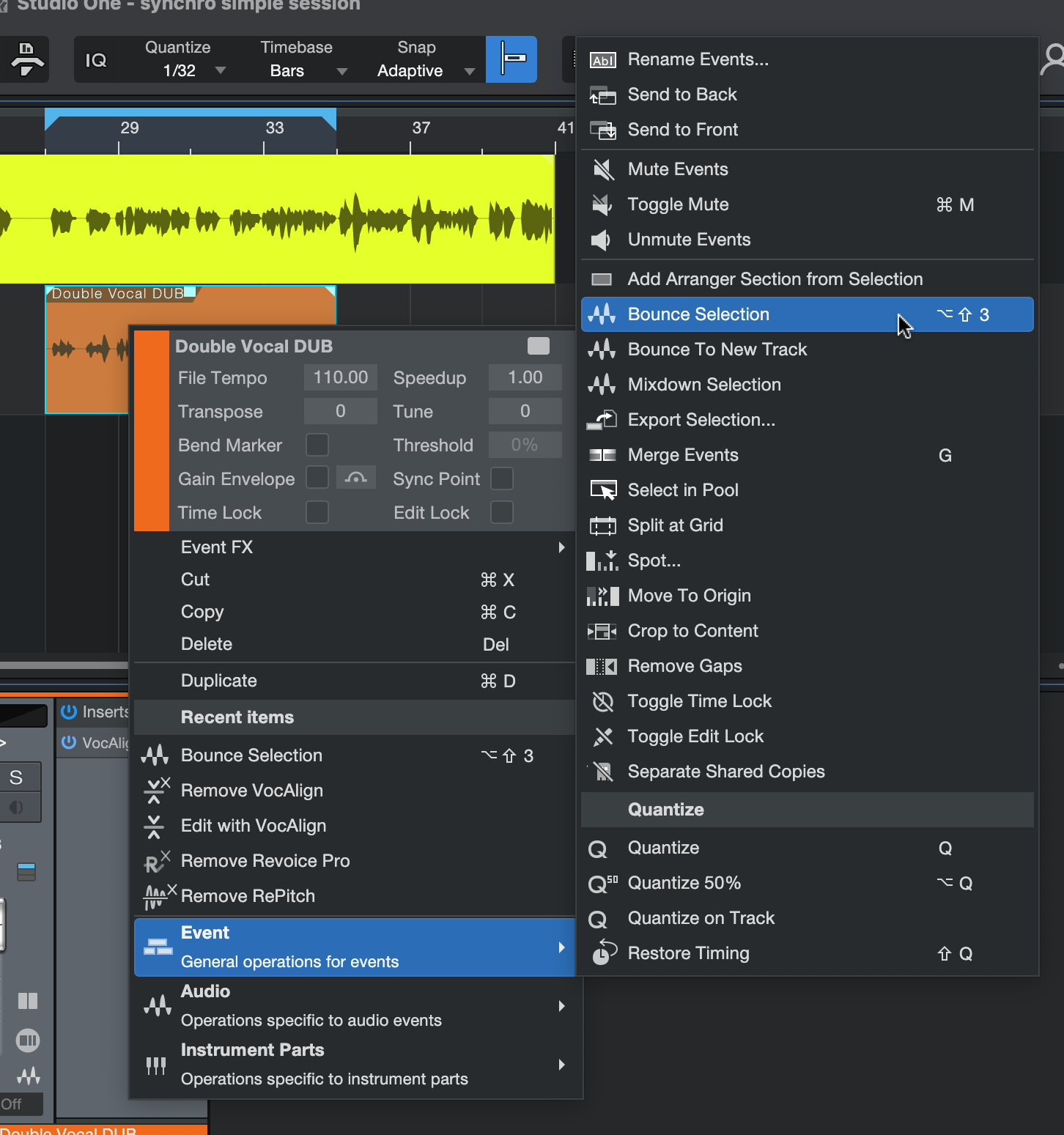
Further controls
Vocalign also provides in-depth control via the Pitch, Timing, and Other control panels available on the right side of the UI. These controls are discussed in detail here.
To open these panels, click the three icons on the right side of the interface, circled in red below.
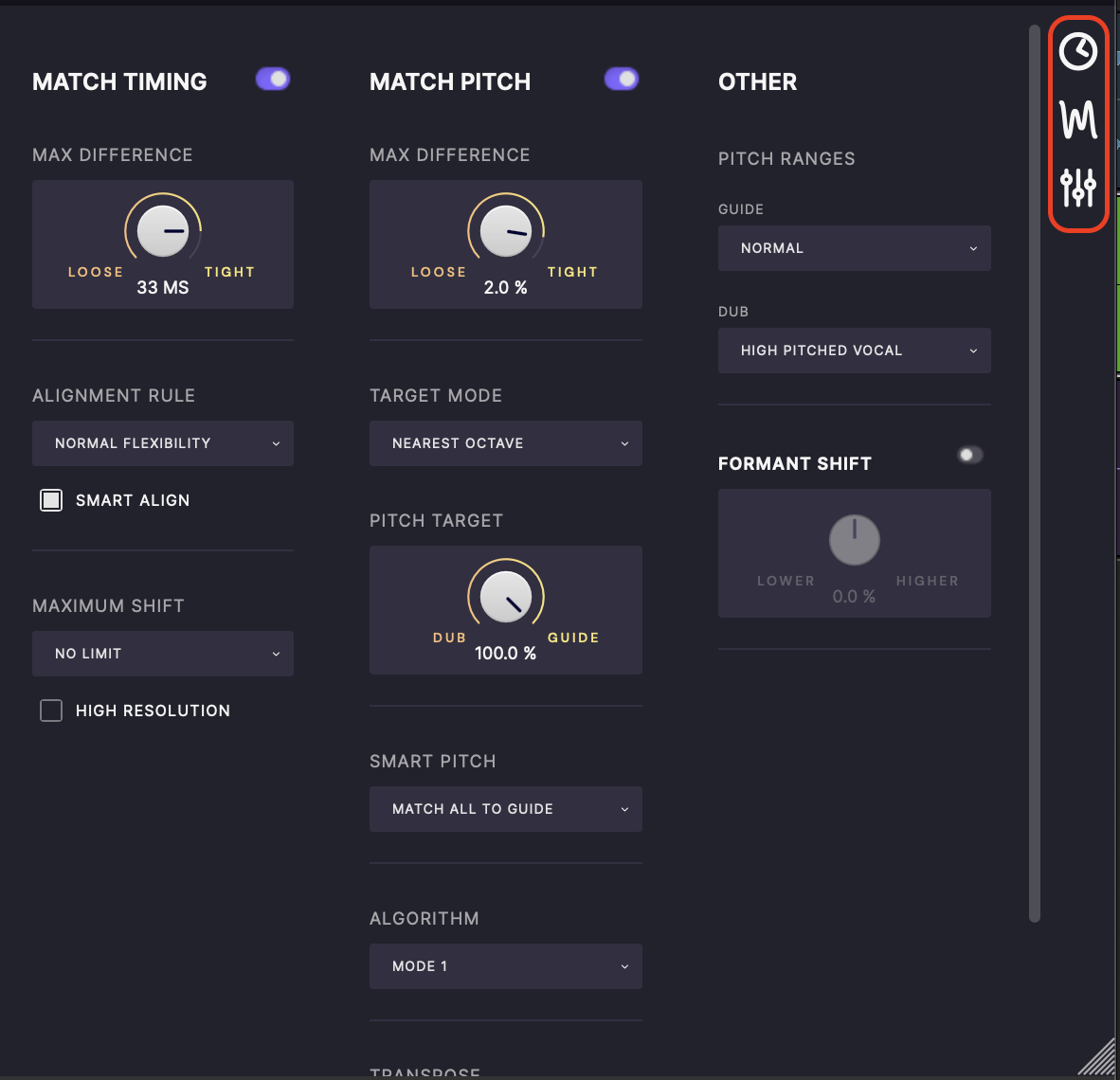
You can adjust the Max Difference controls in the Match Timing and Match Pitch sections to tighten or loosen the timing and pitch alignment applied by the preset. With each change, the Output is reprocessed and the Output waveform redrawn, and the audio is synched to Pro Tools via the ARA connection.
Processing a Harmony Track
When working with harmonies, Vocalign provides Smart Pitch. The Smart Pitch options are accessed in the 'Match Pitch' control panel, discussed in detail here.
Fixing Problems
Protected Areas
There will be times when you want to exclude certain sections in the Dub from processing – when your Guide vocal jumps up an octave, or gets raspy and lower, but your Dub doesn't, for example. Or when there are different words or syllables in the Guide and Dub, which can throw the time alignment off, resulting in unnatural distortion of the Output timing. VocAlign 6 Pro's Protected Areas enable pitch, time or both to be kept unprocessed over any specified range within the Dub.
Protected areas are covered in detail here.
Sync Points
If you're getting small differences in timing caused by different words, sounds or delivery, you can correct them using Sync Points. These let you assign pairs of pointers to events in the Guide and Dub that should be time aligned if they are not.
Click here for more details on Sync Points and how to use them.
Previous